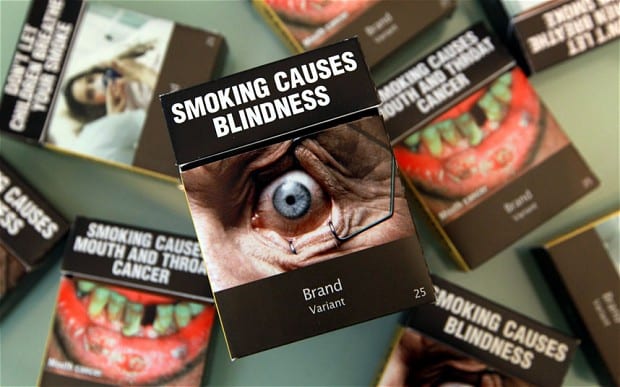The UK Government has postponed plans to introduce plain cigarette packaging in England, a decision the opposition Labour party describes as a “humiliating U-turn” brought about by intense tobacco industry lobbying.
According to Health Secretary Jeremy Hunt, and Health Minister, Anna Soubry, the government would like to spend more time seeing how plain cigarette packaging legislation has fared in Australia. Soubry insisted that the sensible thing to do is gather more evidence and that she “would never give into pressure”.
For many, this seems to be a clear case of Australia standing up to the tobacco giants and England not.
Jeremy Hunt announced “Having carefully considered these differing views, the government has decided to wait until the emerging impact of the decision in Australia can be measured before we make a final decision on this policy in England.”
Dr. Vivienne Nathanson, British Medical Association’s (BMA’s) director of professional activities accuses the government of succumbing to industry pressure and “kicking the policy into the long grass”. The BMA describes the Department of Health’s announcement as “deeply disappointing”.
Dr. Nathanson said “Evidence shows that packaging is a key marketing tool for the tobacco industry and an influence on younger people who start smoking.” She urges the government to reconsider.
The BMA, as a member of the Smokefree Action Coalition, urges the government to allow its MPs a free vote on the issue (MP = Member of Parliament, lawmakers).

Plain cigarette packaging used in Australia. Photo: ASH.org
David Cameron and Jeremy Hunt have received a letter from 188 welfare organizations, including the Faculty of Public Health and the Royal College of General Practitioners describing their decision as “a tame surrender to the tobacco industry”. The letter adds that there is no good reason for the UK to wait any longer, especially as there are more than 200,000 children and teenagers who take up smoking every year.
Professor John Ashton, President of the Faculty of Public Health said:
“The government’s decision not to introduce standardized packs for cigarettes makes no sense. By not taking action now, up to 200,000 children and young people will start smoking this year who would otherwise not have done and will go on to develop health problems – or worse. The only people to benefit from this delay are the shareholders of tobacco companies. We call on the government to urgently reconsider this decision and take responsibility for the health of children and young people by introducing standardised packs.”
The Scottish government, which says it will identify an appropriate timescale to introduce legislation, described the Department of Health decision as “disappointing”.
BMA Scottish council deputy chair, Charles Saunders, said “Scotland has already led the way on some of the most significant public health policy in the UK and I am therefore pleased that our ministers have shown the confidence to continue their strong track record on innovative tobacco control policy.”
The government said it received 668,000 submissions regarding the proposal to have tobacco packets with no branding – just one color and standard typesetting and layout. Of the 2,500 detailed responses, 53% favored plain cigarette packaging, 43% were against, and 4% were either neutral or preferred a different packaging option.
According to The Smokefree Action Coalition, the big four tobacco multinationals are spending enormous sums of money in campaigns against plain cigarette packaging. Just Japan Tobacco International is spending £2 million ($3 million) in the campaign against standardized packs. According to the UK’s Advertising Standards Authority, a series of JTI ads opposing standardized packs breached the UK advertising code.
Dr Hilary Cass, President of the Royal College of Paediatrics and Child Health said “We are extremely disappointed that the Government has backed down from taking this essential step to protect children’s health. Children and teenagers are most impressionable to branding and the attractive packaging used by the tobacco industry is no exception. It’s therefore not surprising that two thirds of today’s smoking population confirm they took-up the habit at a young age. Standardized packaging is urgently needed to cut smoking uptake and prevent smoking-related deaths.”
Researchers from the University of Cambridge, England, reported in the journal BMC Public Health (January 2013 issue) that plain packaging of tobacco products would cut smoking by 1% in adults and 3% in children. For the study, the researchers recruited 14 tobacco control experts from the UK, 12 from Australasia and 7 from North America.
This video from Cancer Research UK shows how cigarette packaging influences children: